Now celebrating 70 years, we take a look back across the pages of the Toyota Land Cruiser history book, from its rugged utilitarian roots all the way back in 1951 through to its current modern-day incarnation packed full of all the latest cutting-edge tech and creature comforts the customer of today expects.
The omnipresent Toyota
From its beginnings in 1951 as a mobility vehicle for Japan’s National Police Reserve, and then through sixty years of continuous production, fourteen model lines and thousands of variations, the Land Cruiser is the longest produced vehicle in Toyota’s history. During that time it has sold more than ten million examples and become a cult object within the four-wheel-drive sector, consistently setting the benchmark for durability, ruggedness, reliability and flexibility. It is the world’s most customer-trusted vehicle and marked the foundation of Toyota’s development target of quality, durability and reliability.
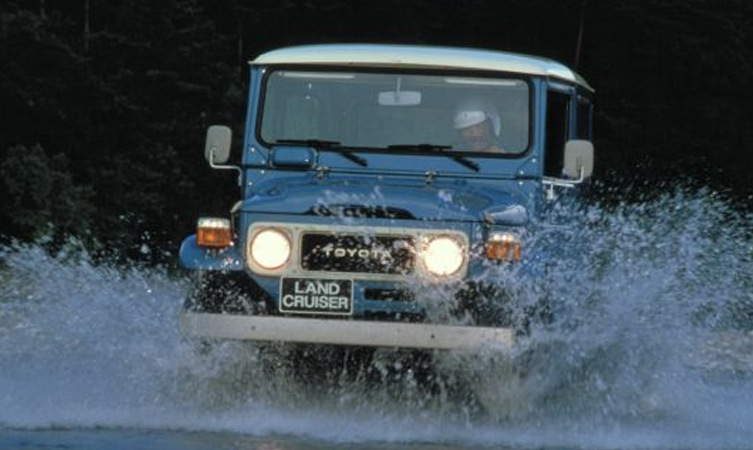
Necessity, the mother of invention
When North Korea invaded South Korea in June 1950, Japan was still under American occupation. As the US and United Nations sprung to South Korea’s assistance, Japanese manufacturers were commissioned to supply compact four-wheel drive trucks to the US military. Toyota received huge purchase orders for these vehicles, as it had been one of the primary truck suppliers for Japan’s own forces during the 1940s.
But in building vehicles for the Allied forces and these forces being somewhat distracted assisting South Korea, the Japanese people felt vulnerable. A limited re-armament was therefore permitted, including 1000 four-wheel drive vehicles similar in specification to the Willys ‘Jeep’. However, they had to be built using domestically sourced raw materials.
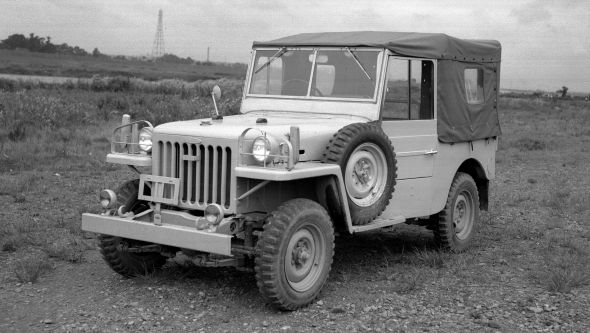
Just five months after being given the go-ahead to start development, January 1951 saw Toyota present its prototype to the National Police Reserve (NPR). It was a parts bin special, using the chassis of Toyota’s one-ton Type SB truck with the oversized 3.4-litre Type B six-cylinder petrol engine of the four-ton truck, suspension from the Toyopet passenger car, and a rudimentary open body.
Unfortunately, the NPR preferred Mitsubishi’s familiar licensed version of the Willys to the Toyota offering. Unperturbed, Toyota saw great potential in its prototype, resolving to continue development and find customers on its own, especially as export restrictions had been lifted the year before.
The legend grows
Advancements were swiftly applied to the ‘Toyota Jeep BJ’ (the initials referred to B-series engine and Jeep) and the vehicle was tested by tackling technological feats that had only previously been possible on horseback – replicating a samurai warrior’s legendary climb to the Shinto temple at the top of Mount Atago, and driving up the old pilgrim route to the sixth station on Mount Fuji. The improved BJ was successful on both events, the reward for Toyota being to replace Mitsubishi as official vehicle supplier to the NPR.
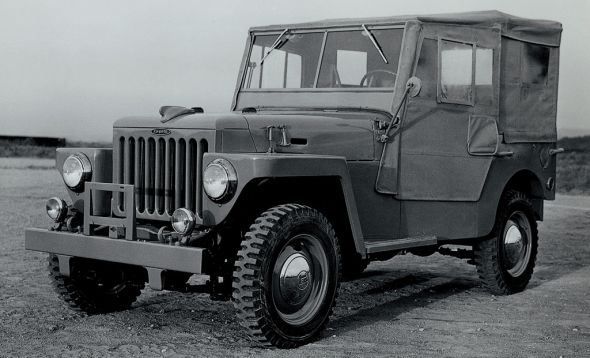
Five different versions sprung from the BJ platform: mobile communications, touring liaison, fire fighter, and two pickups. But it took until August 1953 for the start of series production; by which time a number of other government agencies and energy companies had put in orders for this new vehicle.
In 1954, the hand-me-down ‘Toyota Jeep BJ’ tag was replaced (Willys had since trademarked the name ‘Jeep’) with the descriptively memorable name Land Cruiser. This helped launch the vehicle into export markets, with Pakistan receiving the first shipment later that year and Saudi Arabia following in 1955.
Civilised for civilians
August 1955 saw the introduction of the second-generation (20 series) vehicle, and in the four years following the original concept’s debut it had evolved from military machine to civilian utility vehicle. The changes were dramatic, the new car looking far more civilised with rounded bodywork, integrated headlights, and a more spacious cabin that didn’t make front seat passengers feel like they were conjoined twins.
The short-wheelbase model was shorter than before, improving manoeuvrability, while a new long-wheelbase model allowed different applications to multiply. The suspension was now partly sourced from the Toyota Crown and was more comfortable for road use, though at this point in time Japan had no highways and reaching just 35mph was deemed exhilarating. Export models, therefore, ran uprated suspension setups.

A new cast iron F-series engine was phased in from November 1955 and offered a useful 23% power increase over the outgoing model. A development of the B-series, this low-compression engine first saw the light of day in 1948 and wasn’t discontinued until late 1992, which makes it the longest-serving of all Toyota powerplants. It’s widely regarded as one of the most indestructible and unstoppable engines ever produced, holding true to this advertising slogan from its maker: “We’ll know how long it lasts when the first one wears out.”
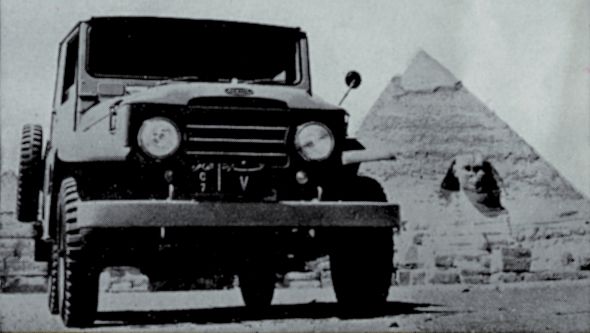
Acquisitioning success in US military trials in 1957 spurred on Toyota to launch the model in numerous established and emerging export markets. In many cases the Land Cruiser was the first Toyota to arrive on foreign shores. It therefore became the standard-bearer, paving the way for the passenger cars and international sales success that followed. Indeed, of the vehicles of all brands exported from Japan in 1957, 38.2% were Land Cruisers.
The world beater
A fundamental redesign was applied for the third-generation 40 series Land Cruiser for its launch in 1960, though casual onlookers often struggle to tell it apart from its predecessor. It featured slightly more rectangular arches and the indicators had moved to the front wings, but most people recognise the 40 for the lozenge-shaped bezel framing the circular headlamps and radiator grille.

Once again, everything about the Land Cruiser was no-nonsense. The interior featured the bare essentials and nothing more; not even sound insulation. The simple pressed steel body panels were essentially there to stop the outside coming in, while the initial engine choice came entirely from the sturdy F-series range (a smooth H-series diesel was added in 1972 and joined by a four-cylinder B-series model in 1974).
The only thing potential buyers really had to ponder over was to match their choice of final drive ratio with the type of terrain they expected to encounter. ‘Full’, ‘Economy’ or ‘Moderate’ was available, while the carried over three-speed manual transmission now included a transfer case that reduced the overall ratios to provide a total of six forward gears; three for the road and three for off-road.
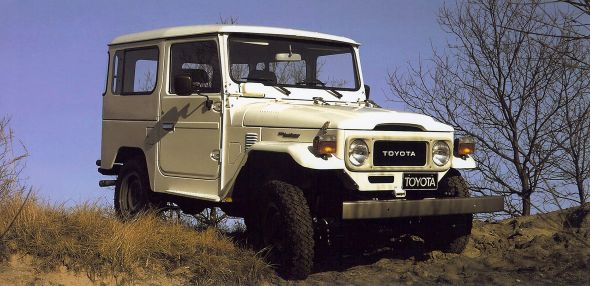
Four wheelbase choices were available, allowing countless permutations from the original-style open body to the enclosed troop carrier, or ‘Bush Taxi’, as it is affectionately known in West Africa. Essentially, there was a Land Cruiser to suit everybody’s needs, which led to meteoric sales figures.
In 1965 the 50,000th Land Cruiser rolled off the production line, followed by the 100,000th in 1968. Four years later the total stood at 200,000 examples, while the 800,000th was built in 1979 soon after a minor facelift (the first change in 19 years). The UK started official sales of the Land Cruiser in 1975, and the landmark million was achieved in 1980.

Though Japanese production of the 40 series Land Cruiser ended in 1986, the 40 continued through to late 2001 when the closely related Brazilian special called the Toyota Bandeirante (50 series) eventually finished production. You can therefore say that the body introduced with the 20 series and refined for the 40 enjoyed an incredible 51 years of continuous production. No wonder you can still find examples working for their living throughout the world.
Re-creation for recreation
While Toyota’s in-house design department concentrated primarily on styling cars, the Land Cruiser’s appearance had been left at the mercy of engineers. However, once it was noticed that buyers in the US especially were looking for a four-wheel drive vehicle for recreational use and with enough space for an entire family’s clobber, the design teams were diverted to the J4’s drivetrain and tasked with creating a spacious, enclosed variant that was capable of comfortably cruising at 80mph yet lost none of the base vehicle’s off-road ability.

The result was the 55 series Land Cruiser Station Wagon of 1967, and its unique amalgamation of various target groups into one product marked the beginning of a fundamental change in Toyota’s strategy for the vehicle. From then on there would only be two model lines – Land Cruiser and Land Cruiser Station Wagon. This latter variation was an instant success, comprising approximately 11% of total Land Cruiser sales by the end of production in 1980.
Luxury meets utility
The baton of luxury off-roader station wagon was handed immediately to the 60 series. Launched in 1980 in the middle of the world’s second oil crisis, the new vehicle was designed to meet the public’s desire for more efficient transport as well as offering improved space-efficiency within the same overall length (an optional high roof model was also available). Despite numerous flat surfaces, the body was a noticeably rounded design that for the first time in its history featured integrated front wings and a wide-set grille for a muscular frontal aspect.

The overall direction of the 60 was evidently toward comfort. It could be argued that the new luxury interior made a bolder statement than the exterior with sound insulation and wall-to-wall upholstery that was alien to all previous generations. Depending on the configuration, the interior was flexible enough to be offered in five, six, eight, nine or ten-seat formats, while the total luggage capacity was an immense 2760 litres – almost enough to live in!
Underneath, much of the 50’s robust ladder-frame chassis, solid axles and leaf spring suspension was carried over, albeit with softer springing and the inclusion of a front anti-roll bar for flatter cornering. A four-speed manual gearbox was the launch transmission, replaced by a five-speed setup in 1983. The following year a four-speed automatic became available, the first of its kind installed in a Japanese 4×4.
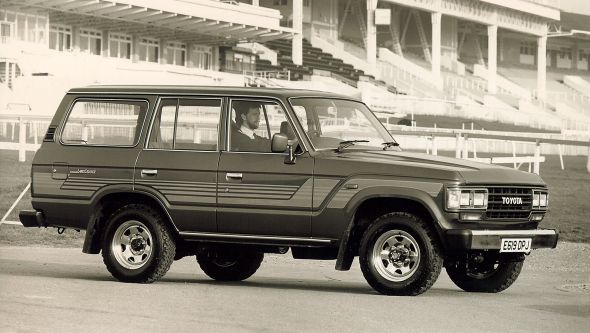
Power from the familiar range of F-series petrol, B-series and H-series diesel engines was primarily directed to the rear wheels, though the front hubs could be locked manually and four-wheel drive selected while on the move. A transfer case provided the low-range ratios necessary for serious off-road use, while the front and rear differentials could be mechanically locked by means of two levers on the central tunnel.
Important changes applied during the 60’s lifespan included a modification of the venerable 4.0-litre 2H diesel engine to feature turbocharging and direct injection. From August 1986 onwards, manual activation of the four-wheel drive and locking differentials was switched for a pushbutton electro-pneumatic setup with a specific rear-first engagement sequence for the differentials.
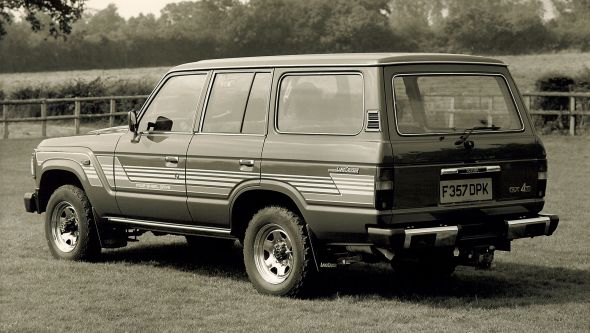
The last 60 series rolled off the production lines (it was also built in Venezuela) in December 1989 after a run of 406,700 examples. By now, however, the F-series engine that had seen service since 1948 was really beginning to show its age.
A rounded propostion
After a ten-year run, the Seventies styling of the 60 series Land Cruiser Station Wagon had run its course. Functionality alone was no longer enough to win sales over competitors with more pleasing forms and higher gadget quotas.
The new 80 series replacement arrived in 1990 at the pinnacle of the Japanese economic bubble. So immediately popular was it that in the first six months from its launch the production line was active around the clock to satisfy demand. Because the overall proportion of Land Cruisers being built at that time was heavily biased towards the new 80, it was this model that became the two-millionth Land Cruiser produced.

Larger in every dimension, the car closed the gap between utility and luxury. The design was new from the ground up, offering a refined, wind tunnel honed shape, with large radii transitions between the roof, flanks and rear, plus a sharply raked windscreen. Like the 60, there was only one body configuration, though it could be beefed-up with optional arch flares. Depending on the export market, seating was available for between five and ten people.
Drivers of premium versions felt like they were in a command centre, isolated from the outside world and enjoying equipment levels the equal of any luxury saloon. For the first time in Land Cruiser history there was even leather covering the steering wheel!
Underneath, the previous car’s agricultural leaf spring arrangement had been replaced with coil springs for improved axle articulation, while the solid axles were now located by longitudinal links. Panhard rods were used front and rear, as were anti-roll bars. The upshot of all this was a car with straight-line stability, stable cornering and superb off-road agility.
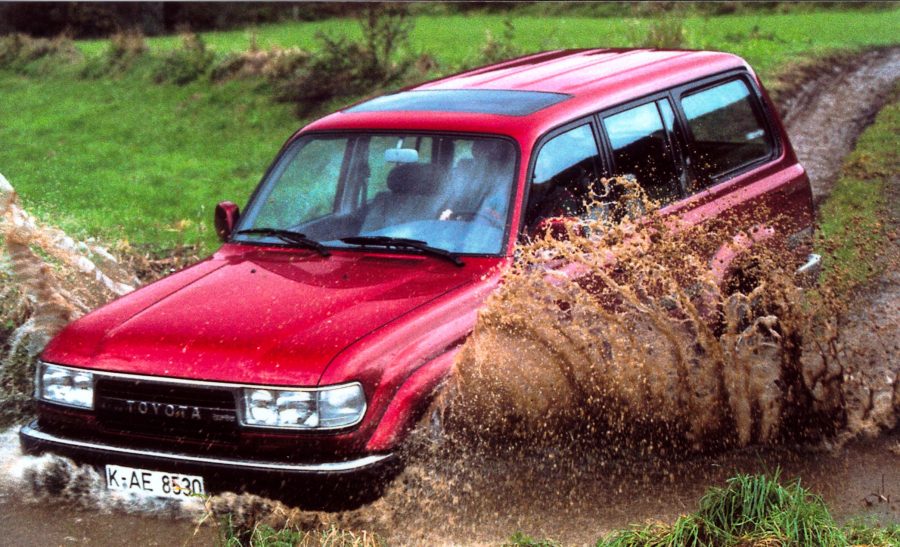
Engine choice was mostly shared with the Station Wagon’s 70 stablemates. However, due to their suitability for this segment, Toyota made a major effort to develop its oil burner powerplants, which eventually led to the release of the unstoppable 1HD-FT 4.2-litre 24v direct injection turbo diesel with 170bhp. The long-serving F-series engine was finally laid to rest when the 1FZ-series of 4.5-litre six-cylinder petrol engines were introduced in 1992. Depending on engine choice, transmissions were either a five-speed manual or four-speed automatic.

Japanese production ended in 1997, by which time the 80 series had accumulated 550,000 sales from a total production volume of 3.4 million Land Cruisers. The model persevered for another ten years in the South American market from its production site in Cumaná, Venezuela.
The ultimate solution improves
While many thought the 80 series Station Wagon was the best-possible solution within the premium off-road segment, Toyota felt it had lost ground in areas such as on-road performance. The four-wheel drive market had also become the most lucrative in the automotive sector, so the importance of the model to replace the eight-year-old 80 was not underestimated.

Launched in 1998 while its predecessor was still selling well, the new 100 series Station Wagon (known as Land Cruiser Amazon in the UK) was even more imposing in size but a little friendlier in appearance. Without pomp or circumstance, the progressive design replaced the previous car’s aggressive bolt-on arches with subtle flares, the light units were much larger, and the windows sat flush with the bodywork to minimise wind noise and aerodynamic drag.
Inside space had grown significantly, giving rear seat passengers an additional 70mm of legroom. Seating options remained unchanged, offering combinations suitable for five to ten people. Prices, however, had increased, though if you spec-matched the 80 to the same level as the 100 the new car was actually the cheaper proposition.

An independent front suspension setup similar to that of the 90 Prado (see History of Toyota Land Cruiser – Heavy and Light Duty models) was finally applied to this model after having being evaluated and rejected on the earlier 60 and 80 series Station Wagons. But in view of the Land Cruiser’s fiercely loyal customer base, this independent setup wasn’t applied across the board; a version was still available with two solid axles in certain markets, though it couldn’t be paired with the mighty 4.2-litre turbocharged diesel engine.
According to Toyota’s engineers this progression to independent suspension was inevitable for a 21st Century vehicle whose image was that of a technology carrier. And in that respect, the 100 was replete with innovations such as hydropneumatic suspension with adjustable ride height, multi-stage shock absorber settings, electronic brake-force distribution, traction and stability controls.
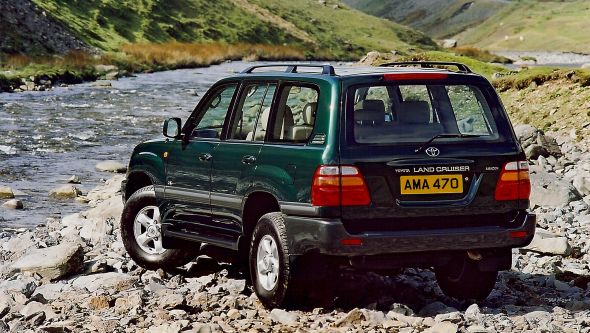
Of the five big-capacity engines available, three were six-cylinder diesels of 4.2-litre displacement, which secured 75% of all sales. Yet the big news for the 100 series was the introduction of a newly developed 4.7-litre V8 petrol engine – the first V8 to be fitted to a Land Cruiser.
Its predecessor was an all-alloy motor that had seen service in the Lexus LS400 but in the interest of assured durability this version was built on a massive cast iron block and put out an unstressed 235bhp and 317 lb/ft. In 2006 this motor was slightly reworked to include variable valve timing and drive-by-wire throttle control, not to mention a much healthier output of 275bhp.
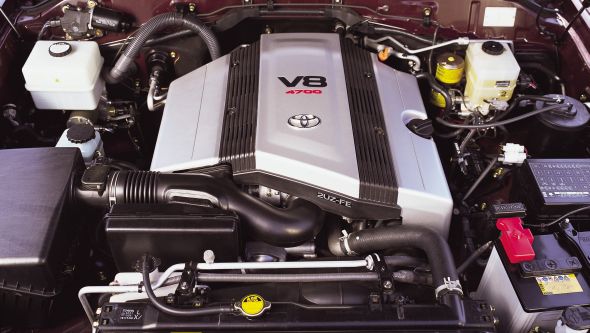
Like the earlier 80, the 100 series Station Wagon was a sales success, boosting Land Cruiser sales by a significant margin. Shortly after the close of this model’s production in 2007, Toyota captured the title of world’s largest auto manufacturer.
Engendering trust
The 200 series Land Cruiser Station Wagon was launched in early 2008 after five years of development. At the time of its arrival, over 5.5 million Land Cruisers had been built, two million of which were of the station wagon variety. The new car was designed to radiate calm and superiority in every situation it met, while also offering improved environmental considerations and the evolving expectations of its loyal customer base.
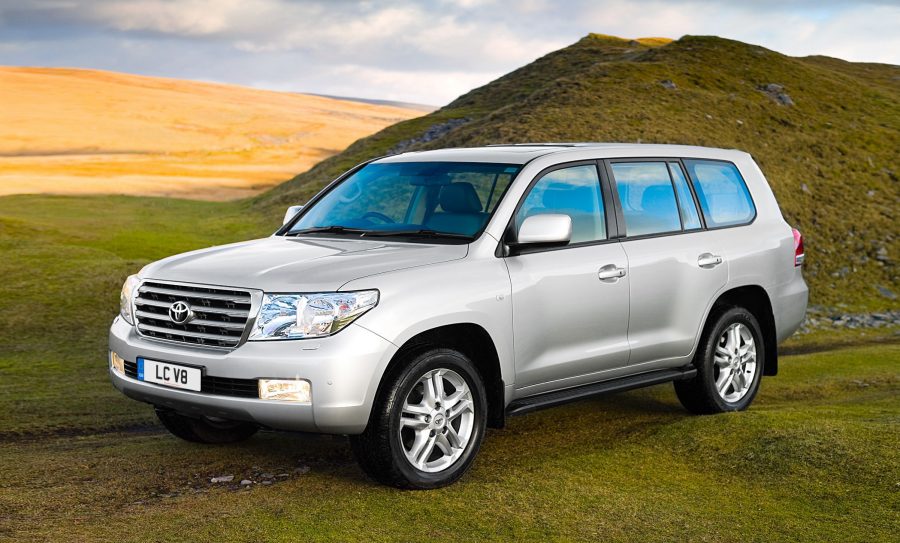
Also known in some markets as the Land Cruiser V8 thanks to its new, all-conquering 4.5-litre 286bhp twin-turbo V8 diesel engine, the new 200 series is large in every sense; in fact, almost 300mm longer and wider than its 55 series predecessor. The word at the forefront of the Japanese team’s mind when developing this vehicle was ‘trust’ – its appearance and performance had to engender this quality to both onlookers and occupants.
Reworking of the engine bay allowed it to be shorter than before, improving the length of the passenger cell by 130mm and therefore space for the many seating permutations customers have come to expect from this variant. Meanwhile, the independent front suspension now uses coil springs instead of torsion bars, offering 230mm of travel (240mm for the rear). But the most impressive part of the off-road experience is how unruffled the car is thanks to numerous fast-reacting technical assist systems in support of the driver.
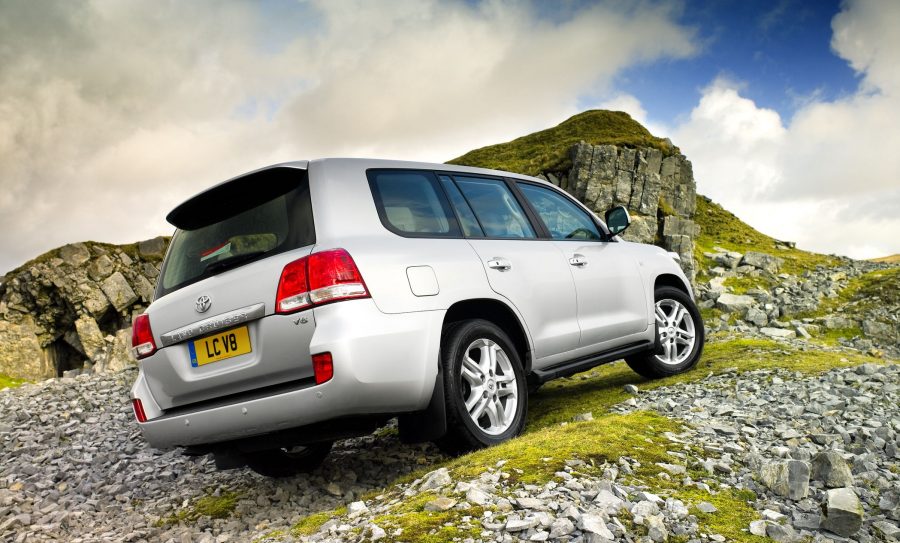
No longer did you have to manhandle the Land Cruiser across country, as you had to in the 55 series model. It almost floats through the scenery like an unstoppable force, yet far from being over-developed to the detriment of its serious off-road performance, the current Land Cruiser can probably head off into uncharted territory with greater strength, durability and reliability than ever before.
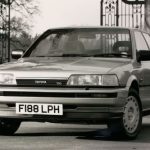



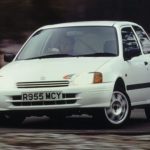
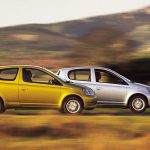

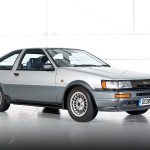


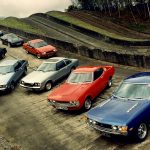


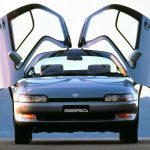


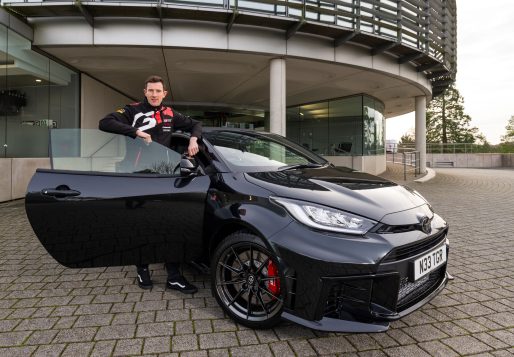
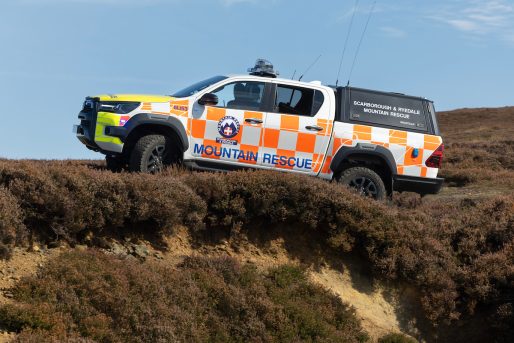
from good looks to ugly looking . why why why ???
Can anyone tell me what year the LC first became commercially available in the UK?
Please email replies to jaysevern.author@gmail.com
Hi Jay
The UK started official sales of the Land Cruiser in 1975. Thanks for your interest.
what tyres are best for offroad
Dunlop
Got an 80 and love it. Might one day change it for an Amazon but think they have spoilt the new models. Wouldn’t buy a new one. Stick with my 80
my Prado is nearly 22 years old now and still as good as new, I love it to bits, nothing comes near it for reliability and comfort.
Hi Keith,
That’s great news to hear. If you have covered more than 150,000 miles in your car, you’ll be eligible to become a member of our High Mile Club. You can let us know by posting a picture of your car’s odometer with the hashtag #HighMileClub on our Facebook page or when mentioning @ToyotaGB on Twitter, and we’ll get in contact to post a sticker out to you. Click here to find more information: https://mag.toyota.co.uk/high-mile-club.
We wish you many more miles ahead.
Thanks.
Hi I wonder if you could assist me. We recently purchase a very old Toyota Landcruiser and hope to rebuild is from scratch. Problem is we have no idea when the vehicle was originally build as it has been removed from the system according to Toyota SA. Could you perhaps assist me with information on this vehicle. Vin: HJ47002604 Much Appreciated Thanks Linda South Africa
Hi Linda,
Thanks for getting in touch.
In order for our Technical team to look into this further for you, could you please provide us with a photo of the VIN / frame plate and a photo of the vehicle. If you could send it to our Facebook page via direct message and we will pick it up there.
Here is the link to the page: https://www.facebook.com/toyotauk/.
Thanks.
DEAR TOYOTA TEAM
I WOULD LIKE TO BUY A OLD LAND CRUISER WITH VINTAGE LOOK AND MODERN FEATURES WHICH ONE WILL U SUGGEST AND CAN I BUY IT ON INSTALLMENTS??
Hi there,
Thanks for getting in touch. We can point you in the direction of the Signature model from the Land Cruiser specialists at the FJ Company. Please use the following link to find out more:
We hope this helps!
Hi which models allow enough boot room to be able to install a double bed platform? Thanks
Hi Liz,
Thanks for getting in touch with us. This certainly sounds like an exciting project!
The Proace would have enough boot room for this, and a link to our conversion partner is here: https://wellhouseleisure.com/our-brands/toyota-matino-2/
Thanks.
Hi i don’t se my land Cruiser in the history can I send you a picture and you can help me I don’t know if is a prototype or a special edition. O something rare
Thanks
Hi Vittorio,
Thanks for your comment.
We would recommend getting in touch with the Toyota distributor in your region for further advice on your query as we are only able to advise on UK vehicles.
Thanks.
Last 80-Series models was built in Venezuela until 2007 which was the only country producing the vehicles after production ended in Japan in 1997.